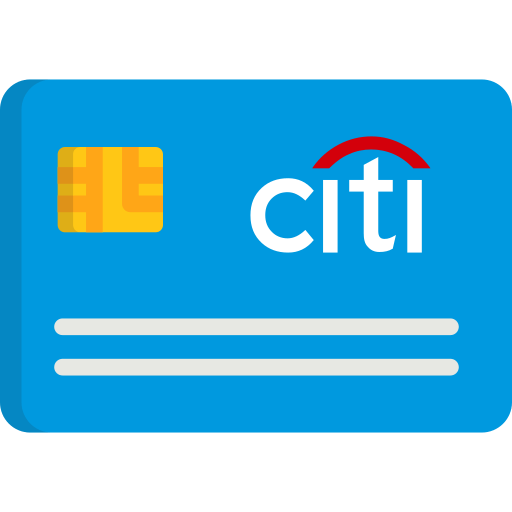By doing this, companies limit how much space is taken up on the ledger. There is only one balance for accounts receivable instead of the thousands there would have been otherwise. If someone needs information about a specific customer, then they can check the subsidiary accounts or records to learn more. In double-entry accounting, accounts receivable and accounts payable are the most commonly used control accounts. The process would be completed for the accounts payable control account, which would record transactions from the purchases journal as well as the cash account. When using a control account for accounts receivable, a variety of subsidiary transactions will be included in the control account balance.
If anyone wants to see detailed transactional information for accounts payable or accounts receivable, they can review the detail located in the subsidiary ledger, since it is not located in the general ledger. The control account keeps the general ledger free of details, but still has the correct balance for preparing the company’s financial statements. A control account is a summarised account that maintains the records of the individual donations for nonprofits and institutions accounts in the ledger, and that is clarified and re-verified regularly. As a result of following this procedure, the management can create control over the ledger posting, which prevents the possibility of fraud and misrepresentation. A controller is important to finance as they control the risk and reporting aspect of the company. A controller is the point person for making sure the financial reporting is done correctly.
- Meanwhile, a CFO utilizes these reports to focus on more broad, big-picture company positioning.
- The ending balance in a control account should always match the ending total for its subsidiary ledger.
- But final say on numbers should be in the hands of an accountant, because management may have the incentive to distort numbers to inflate the company’s performance.
- Control accounts provide summary balances that are sufficient for analysing financial reports.
Each of those balances is recorded in a separate A/R subsidiary account. The total for all the accounts is taken and put into the A/R control account. While subsidiary accounts are critical for recording a company’s transactions, control accounts allow for high-level analysis by simply focusing on the balances of each account. They are especially important for reconciliation in large companies with a high volume of transactions when only the balance of the account is needed. In accounting, the controlling account (also known as an adjustment or control account[1]) is an account in the general ledger for which a corresponding subsidiary ledger has been created. The subsidiary ledger allows for tracking transactions within the controlling account in more detail.
Doing this allows you to produce a trial balance and balance sheet without all of the transactions displayed. A control account for her business is the general ledger account entitled Accounts Receivable. Typically, this includes total credit sales for a day, total collections from customers for a day, total returns and allowances for a day, and the total amount owed by all customers. Control accounts are crucial elements of double-entry accounting and form the basis of the general ledger. Functioning as a summary of total balance for the subledger, they provide a focused analysis of a business’s balance sheet. Plus, when it comes to financial reports, the summary balances displayed in control accounts are generally considered sufficient information.
What Is a Control Account – Meaning, Purpose, and Examples
Used with subsidiary accounts, your control balance should always be equal to the balance in the control account. They help clean up a company’s financial statements, and provide a way to fact-check the ledgers. Great accounting software has many of these features built in, making accounting easier on you. If you found this article to be helpful, be sure to check out our resource hub!
- Using a control account can guard against fraud, particularly if you have someone else maintain the control account.
- There are few precise details regarding the maintenance of a sovereign state’s books of accounts in his book Arthashastra.
- Great accounting software has many of these features built in, making accounting easier on you.
- You have two options for using control accounts and the double-entry system.
They show the balance of transactions detailed in the corresponding subsidiary account. A debtor control account, a creditor control account, and a stock control account are all control accounts. A general ledger contains these kinds of control accounts for summarising business activities within the general ledger. All individual balances have been transferred to creditors’ control accounts. All individual balances have been transferred to the debtor’s control account.
If there is a balance, a schedule of accounts payable would be prepared in the same manner as accounts receivable. Control accounts are typically used in larger organizations that have hundreds or even thousands of transactions. Control accounts are part of double-entry accounting, which states that any debit posted to the general ledger will have a corresponding credit posted to the general ledger as well. If you’re interested in finding out more about control accounts, then get in touch with the financial experts at GoCardless.
In an accounts receivable control account, the total amount owed to the company at any given point in time is shown without the details of the transactions with each customer. The use of accounts receivable and accounts payable control accounts creates an accounting system where only the general ledger is self balancing. The subsidiary accounts receivable and payable ledgers have only one sided entries and therefore do not self balance.
Control accounts can be useful
Similarly, if every transaction will be recorded in the general ledger, it would become very difficult to organize the general ledger properly. Therefore, we need to have a separate controlling account for each account such as for accounts payable and accounts receivable. In addition, it provides organized and correct ending balances of specific account types for preparing financial statements. Moreover, it bring forth accuracy of analysis because it provides double-check of ending balances of each account.
Definition and Examples of Control Account
However, if Taylor or anyone else wants to find out the amount that a specific customer still owes for their credit purchases, or when they bought the item, that won’t be shown in the control account. You have two options for using control accounts and the double-entry system. A control account can keep a general ledger from becoming choked with transactional detail. Control Account (CA) is a management control point at which budgets (resource plans) and actual costs are accumulated and compared to earned value for management control purposes. Now transfers all the individual accounts’ debtor’s balance to the debtor’s account. For larger companies, controllers report up to a CFO or other executive.
What Are Accounting Controls?
That is why control accounts are used to summary data from large numbers of related accounts. For example, a controller may oversee the accounts payable department responsible for 1099 reporting. Though this process is unrelated to internal accounting transactions, the controller may be a stakeholder in the process and give feedback on process improvement implementations. A controller is an individual who has responsibility for all accounting-related activities, including high-level accounting, managerial accounting, and finance activities, within a company. The duties of a controller include assisting with the preparation of the operating budgets, overseeing financial reporting and performing essential duties relating to payroll. This section will look at the transactions for Fooz Ball Town and how to post to subsidiary ledgers for accounts receivable and accounts payable.
Accounting Ratios
A controller often oversees the department leads within finance for each respective department tied to financial reporting. This may include the accounts payable lead, procurement lead, purchasing lead, financial reporting manager, or payroll manager. In general, CFOs often take a greater presence in external-facing tasks including mergers, acquisitions, or involvement with investors. Meanwhile, financial controllers own more of the internal reporting process including implementing internal controls, managing the month-end close schedule, and ensuring financial accuracy. If you’re still using manual ledgers to record accounting transactions, the best thing you can do is make the switch to accounting software, which includes complete control account management. Control accounts are general ledger accounts that summarize lower-level activity into a single balance.
The details for each control account will be found in a related (but separate) subsidiary ledger. A control account is a memorandum account to which various debits or credits from individual ledger accounts are transferred. Depending on the size and organizational layout of a company, the controller may hold more than one title or be responsible for multiple aspects of finance. In general, especially for larger companies, there are differences between controllers and other high-ranking financial positions. Across all of the duties, a controller often works most with the collection, analysis, and consolidation of financial data. Although the controller doesn’t always maintain the annual budget, the controller position monitors variances, summarizes trends and investigates budget deficiencies.
AccountingTools
The controller may reports material budgeting variances or expenditure variances to upper management. An example of a preventive control would be limiting management’s involvement in the preparation of financial statements. Sometimes it’s helpful for management to be involved since they generally know the company better than anyone. But final say on numbers should be in the hands of an accountant, because management may have the incentive to distort numbers to inflate the company’s performance. Chartered accountant Michael Brown is the founder and CEO of Double Entry Bookkeeping. He has worked as an accountant and consultant for more than 25 years and has built financial models for all types of industries.
The total of all of these accounts is carried forward into the A/R control account, which appears in the general ledger and the financial statements. Control accounting helps create streamlined financial reports, and can provide an additional verification step to ensure accuracy. For example, an accounts receivable control account must have a subtotal which matches the customer balances in the sub ledger. If there is a discrepancy with these totals, then there is an error somewhere in the books which must be identified and corrected. When monitoring your business’s general ledger, you may have an accounts receivable control account.
By doing this, you can track the record of every customer; their opening and ending balances as well as how much you owe or have to pay. Secondly, then you will make a control account in which you put the summary amount- total sales with its invoice price, total collections, or total payout. Thus, a it helps you to track the overall performance of your business. Control accounts are most commonly used to summarize accounts payable and accounts receivable as these tend to contain a lot of transactions. Therefore they are separated into subsidiary ledgers rather than clutter up the general ledger with too much detailed information. The details of a control account will be found in a corresponding subsidiary ledger.





